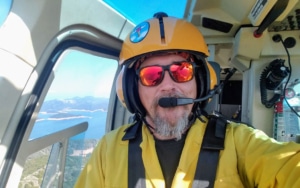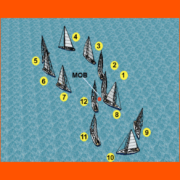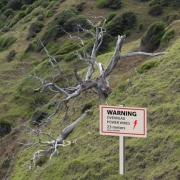Pre-Sail Risk Assessment for Skippers and Instructors
A risk assessment that EVERY sailor should perform before casting off
by Capt. Gordy Cox
At NauticEd, competence isn’t just a box you check – it’s a culture we (sailors) literally live by. Every fun and adventurous day on the water starts with preparation that begins well before the dock lines come off. That means assessing risks with an approach and mindset similar to what professional pilots use when running through a pre-flight checklist – because Mother Nature doesn’t give many second chances for missed details.
It’s why we were excited when Capt. Gordy Cox, a NauticEd instructor and professional helicopter pilot, offered his perspective on a pre-sailing risk assessment. It’s an important topic and perspective that, frankly, is often overlooked in sailing. Competence and safety are inseparable, and Capt. Gordy’s “Risk Assessment Checklist” is something that every skipper should use!
*Note: we’ve included a PDF version at the end of the article that you can print and use on your next sail.
Cheers! Grant (NauticEd Global Director of Education)
In many professions, conducting a risk assessment before beginning or continuing work is standard practice. As a professional pilot, I perform one daily while on contract and before every flight I operate. The same principle applies to sailing: the Maritime Doctrine of “Utmost Good Faith”, (typically insurance and commercial related), requires a skipper to communicate any risks with crew so that they can make an informed decision on whether to participate. NOT doing so can create a personal liability (basically negligence) if someone gets hurt. If for no other reason, this is a good way to review and summarize the day’s activities.
Before you head out on the water—whether for instruction or recreation, it’s essential to assess key risk factors and discuss the day’s activities with your crew or students. The main areas for review are:
- Human Factors – Are you in good condition to sail?
- Equipment& Crew – Is the boat suitable and in good working order? Skipper/Crew
- Environment – Where will you be sailing?
- Weather – What are the wind, waves, and forecasts saying?
- Tasks – What are your planned activities?
- Additional Risks – Anything else to consider?
By working through a structured checklist, you can systematically identify vulnerabilities and get a clear picture of the day’s risk level. More importantly, this checklist serves as a tool for discussion—to ensure both the safety of the boat and crew and that you’re properly prepared for your planned activities.
Once a risk factor is identified, you may be able to mitigate it (e.g., if the windlass is broken but you’re not anchoring, the risk is negligible). Alternatively, some risks may be too high, such as taking a brand-new student out in 25-knot winds—this would be a good reason to postpone.
Pre-Sail Risk Assessment Checklist
1. Human Factors, for skipper/crew/students (Using the FAA’s IMSAFE model)
- Illness – Do you have any symptoms, injuries, or physical limitations?
- Medication – Are you taking anything that might impair your cognitive or motor functions?
- Stress – Are you mentally focused? How are your personal and professional relationships?
- Alcohol & Food – Are you well-nourished and hydrated? Are you hungover?
- Fatigue – Did you get sufficient rest (6+ hours)? Are you alert?
- Emotion – Are you dealing with emotional challenges (divorce, loss, conflict, etc.) that might affect your judgment?
2. Equipment
- Is the boat size appropriate for the day’s conditions and tasks?
- Is it fully operational?
- Broken or worn components (windlass, winches, lines, sails, engine)
- Connected and functional reefing points
- Full fuel tanks
- Updated electronics (GPS, radar, charts, instruments), paper charts
- All safety gear present and functional (PFDs, fire extinguishers, horn, flares)
- Adequate provisions and water
- Skipper and crew qualified
- Correct training materials & tools
3. Environment – Where will you be operating?
- Inside harbor
- Within break walls
- River or delta
- Coastal/offshore sailing
4. Weather
- Current forecast – Improving or deteriorating?
- Wind – Strength, direction, gusts, onshore vs. offshore?
- Waves and swell
- Tides and currents
- Visibility and cloud cover, fog
- Temperature – Air and water
- Rain or thunderstorms forecast?
5. Tasks – What activities are planned?
- Basic sailing – Raising/lowering sails, tacking, gybing, docking
- Advanced techniques – Reefing, heaving-to, spinnaker handling
- Anchoring or mooring
- Med mooring near hazards (rocks, crowded harbors, etc.)
- Night sailing / watches
6. Additional Risks
- Anything else worth considering?
- Are there any crew-specific factors, or special concerns?
- Ask questions—open discussion is key to building awareness and trust.
Final Thoughts
By reviewing this checklist with your crew or students, not only do you protect yourself, but more importantly, you create an opportunity for honest dialogue and shared responsibility. Keep it simple, practical, and conversational. This process isn’t just about safety—it’s about preparation, professionalism, and setting everyone up for success.
Remember, as the skipper or instructor, it’s your responsibility to ensure the safety of everyone aboard and to bring them back safely at the end of the day. If in doubt—delay, adjust, or cancel.
Described by some as an: “Intriguing Bohemian, Nomadic Helicopter Pilot, Sailor, Dudeist Priest, Random Comedian & All-Round good Egg. ✌️❤️ Capt. Gordy Cox clearly has a passion for life and adventure.
I am a USCG Captain, certified sailing instructor with a background as a Commercial Helicopter Pilot, flying a wide variety of tasks: firefighting, power lines, Law Enforcement, tours, and teaching… Contact or learn more about Capt. Gordy Cox
You can learn more with NauticEd

Sign up with NauticEd for FREE (no obligation) and receive 2 free boating courses, a free eLogbook and boating resume, and more! If you want to get started in boating or are experienced and want to expand your knowledge and skills, consider taking our many online sailing and powerboating courses.










